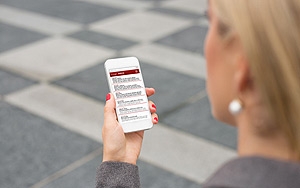 Personalization has been proven to increase
email marketing ROI, but the rate of improvement depends on the degree of personalization, according to preliminary findings from a recent VentureBeat Insights survey.
Personalization has been proven to increase
email marketing ROI, but the rate of improvement depends on the degree of personalization, according to preliminary findings from a recent VentureBeat Insights survey.
Ninety-five percent of email marketers increase their open rates with personalized content, according to the report, while a fifth (21.3%) of email marketers increased their open rates by 5%-10% --
the most common rate of improvement.
This was followed by a 15%-20% open rate increase (20.8% of email marketers) and a 0%-5% increase (17.8% of email marketers).
advertisement
advertisement
Less than 5% of email
marketers improved their open rates by more than 50%, and only 2% of email marketers improved their open rates by more than 70%.
This discrepancy in open rates is likely due to the wide
spectrum of personalization tactics in use in the email marketing industry today. Open rates are affected by the variety of ways email marketers are using customer data and segmenting their
campaigns.
“Not all personalization is created equally,” says Adam Weinroth, chief marketing officer at OneSpot. “It is critical that marketers understand that because
one-way messages don’t have a sustainable future.” Weinroth says personalization is an inevitable marketing trend, and that relevant content is essential when consumers have infinite
choice and complete control over the content they consume online.
“The problem is that personalization means different things,” says Steve Dybsky, vice president of global
partnerships at Persio. Dybsky says there is no clear definition of personalization in the industry yet, but that it is important for email marketers to think of it on an individual level based on
customer experience across channels, devices, and data points.
Weinroth says there are three levels of personalization in email marketing. The first level of personalization is insertion-based
campaigns, and Weinroth cites MailChimp’s services as an example of how email marketers are personalizing messages with individual salutations.
The most popular data in a personalized
email is a recipient’s name, according to VB Insights, but only 32% of email marketers are actually using it. Even fewer email marketers leverage a customer’s previous interactions with
the company (24.4%), purchase history (22.8%), social activity (18.8%) or mobile app engagement history (15.2%).
The second level of personalization contains more dynamic segmentation
capabilities and triggered campaigns. The majority of email marketers fall in to this category, and target messages between two to five segments (28%) and six to ten segments (20%), according to
VB Insights.
The final level of personalization is “personalized one-to-one content marketing based on machine learning,” says Weinroth. “Understanding an individual’s
path to purchase in a holistic way, from initial communication to sale, is personalization,” says Dybsky.
Only 7% of email marketers currently segment customer communication on an
individual level according to the VentureBeat Insights report.